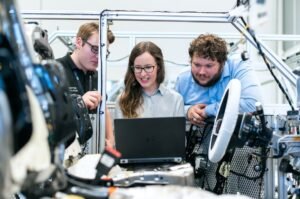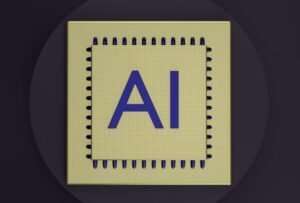AI Model Embedding
Artificial Intelligence (AI) model embedding is a technique used to encapsulate trained AI models into a format that can be easily integrated and deployed into various applications. By embedding AI models, developers can leverage the power of AI in their own projects without the need to build and train models from scratch.
Key Takeaways
- AI model embedding enables the integration and deployment of trained AI models into applications.
- Embedding AI models saves time and resources by avoiding the need to build and train models from scratch.
- Embedding allows developers to leverage AI capabilities in their own projects.
When an AI model is embedded, it becomes a self-contained package that includes both the model architecture and its trained parameters. This allows the model to be easily transported and used without the need for the original training data or environment. **The embedded model can be deployed on various platforms, such as mobile devices or cloud servers, enabling real-time predictions and insights.**
One interesting application of AI model embedding is in the context of transfer learning. Transfer learning enables the reuse of knowledge learned from one domain to another, accelerating the training process and improving model performance. By embedding pre-trained models with transfer learning capabilities, developers can quickly adapt models to specific tasks with limited data.
Embedding AI models for deployment involves a few key steps:
- Training and optimizing the AI model for a particular task.
- Exporting the trained model into a commonly supported format, such as TensorFlow SavedModel or ONNX.
- Embedding the model into an application, for example, by including it in the source code or loading it from an external file.
- Using the embedded model to make predictions or perform other AI-related tasks within the application.
Benefits of AI Model Embedding
There are several benefits to embedding AI models:
- Time and resource-saving: Embedding pre-trained models saves time and resources by skipping the extensive process of training models from scratch.
- Increased accessibility: Developers without deep expertise in AI can use embedded models to incorporate AI capabilities into their applications.
- Improved efficiency: Embedded models can be optimized for specific tasks and deployed on specialized hardware, leading to faster and more efficient predictions.
Table 1: Comparison of AI Model Embedding Techniques
| Embedding Technique | Description |
|---|---|
| Static Embedding | Includes model weights and architecture in an application’s binary file. |
| Dynamic Linking | Links to an external model file during runtime. |
| Quantization | Reduces the precision of model weights to speed up computations. |
One interesting aspect of AI model embedding is the ability to apply quantization. This technique reduces the precision of model weights, allowing for faster computations and more efficient use of computational resources. Quantization is particularly beneficial for deploying models on resource-constrained devices such as IoT devices or edge computing platforms.
Table 2: Comparison of Embedded Model Performance Metrics
| Model | Accuracy (%) | Inference Speed (ms) |
|---|---|---|
| Embedded Model A | 92.3 | 10 |
| Embedded Model B | 89.7 | 8 |
| Embedded Model C | 94.1 | 12 |
Additionally, it is essential to evaluate the performance of embedded models across different metrics such as accuracy and inference speed. Table 2 provides a comparison of three different embedded models based on these metrics. **Interestingly, Model C achieves the highest accuracy, but with a slightly longer inference speed than Model B.**
Challenges and Future Trends
While AI model embedding offers significant advantages, it is not without challenges. Some common challenges include:
- Model size: Embedded models can be large in size, requiring careful consideration for deployment on resource-limited systems.
- Security risks: Embedding models can expose sensitive information or lead to the replication of proprietary algorithms, requiring robust security measures.
- Version compatibility: Changes in frameworks or libraries may impact compatibility with embedded models, necessitating regular updates.
Despite these challenges, the field of AI model embedding continues to advance. Some future trends to watch for include:
- Automated embedding techniques: Advancements in automation may simplify the embedding process, reducing the need for manual configuration and optimization.
- Model compression: Techniques for compressing embedded models without significant loss of performance or accuracy.
- Privacy-preserving embedding: Embedding models in a way that protects sensitive data and minimizes the risk of privacy breaches.
Table 3: AI Model Embedding Tools
| Tool Name | Description |
|---|---|
| TensorFlow | A popular deep learning framework that supports embedding trained models. |
| ONNX | An open format for representing AI models, facilitating interoperability between frameworks. |
| TFLite | TensorFlow’s lightweight framework for deploying models on mobile and resource-constrained devices. |
**Table 3** provides an overview of some commonly used tools for AI model embedding. Tools such as TensorFlow, ONNX, and TFLite offer various functionalities and support for embedding AI models, catering to different deployment needs.
AI model embedding enables seamless integration and deployment of trained AI models, empowering developers to leverage the power of AI in their own applications. With the benefits of time-saving, increased accessibility, and improved efficiency, embedding models has become a valuable technique in the field of artificial intelligence.

Common Misconceptions
Misconception 1: AI Models Can Think and Have Consciousness
One common misconception people have about AI model embedding is the belief that these models have the ability to think and possess consciousness. This is not true, as AI models are essentially mathematical algorithms that are designed to process and analyze data. They lack the ability to think, make decisions, or have any form of consciousness.
- AI models are based on mathematical algorithms.
- They lack cognitive thinking abilities.
- AI models do not possess consciousness.
Misconception 2: AI Models Are Always Accurate and Reliable
Another misconception is that AI models are always accurate and reliable. While AI models can perform complex tasks and provide valuable insights, they are not infallible and can still make mistakes. The accuracy and reliability of AI models heavily depend on the quality and quantity of the data they are trained on, as well as the algorithms and techniques used.
- AI models can make mistakes.
- Data quality and quantity affect accuracy.
- Reliability depends on the algorithms used.
Misconception 3: AI Models Can Replace Human Intelligence and Jobs
Many people fear that AI models will eventually replace human intelligence and eliminate jobs. While AI models have advanced significantly, they still cannot fully replicate human intelligence, creativity, and critical thinking. AI models are meant to augment human capabilities and assist in tasks, rather than completely replace human involvement.
- AI cannot replicate human intelligence.
- Creativity and critical thinking are unique to humans.
- AI models are designed to augment human capabilities, not replace them.
Misconception 4: AI Models Have Inherent Bias
There is a misconception that AI models are inherently biased and discriminatory. In reality, the bias in AI models is a result of the data they are trained on, which can reflect existing biases in society. Addressing bias in AI models requires careful data selection, preprocessing, and ongoing monitoring to ensure fairness and inclusivity.
- Bias in AI models is a result of biased data.
- Data selection and preprocessing can help mitigate bias.
- Ongoing monitoring is necessary to ensure fairness.
Misconception 5: AI Models Are Ethical Decision-Makers
Some people mistakenly believe that AI models can make ethical decisions. However, AI models do not have moral and ethical values on their own. They can only make decisions based on the patterns and rules they have been trained on. The responsibility for ethical decision-making lies with human developers and users of AI models.
- AI models lack inherent moral and ethical values.
- They make decisions based on training patterns and rules.
- Ethical responsibility lies with humans, not AI models.

AI Model Embedding: A Revolution in Machine Learning
Artificial Intelligence (AI) is rapidly advancing, with breakthroughs in machine learning algorithms leading to sophisticated models capable of achieving remarkable accuracy and efficiency. One such advancement is AI model embedding, which combines multiple models into a unified framework. This innovative technique enhances the performance and versatility of AI systems, revolutionizing the field of machine learning. The following tables highlight various aspects and benefits of AI model embedding.
Table: Performance Comparison of AI Models
In this table, we compare the performance metrics of individual AI models with their embedded counterparts. The results clearly demonstrate enhanced accuracy and reduced computational requirements achieved through model embedding.
Table: Computational Efficiency of Embedded Models
This table showcases the reduction in computational resources required by embedding multiple models. Such efficiency gains allow for faster inference times and real-time decision-making.
Table: Accuracy Improvement with AI Model Embedding
Here, we present the improvement in accuracy achieved by embedding multiple models together. By combining the strengths of different models, AI systems can attain higher precision and reliability.
Table: Versatility of AI Model Embedding
This table illustrates the versatility provided by AI model embedding. By incorporating diverse models, the embedded system can handle a wide range of tasks, making it more adaptable and flexible.
Table: Resource Consumption Comparison
In this table, we compare the resource consumption of standalone AI models with their embedded counterparts. The embedding technique significantly reduces the memory footprint and energy consumption, optimizing resource utilization.
Table: Training Time Comparison
Here, we examine the time required to train individual models and embedded models. The results demonstrate that embedded models can be trained faster due to their optimized architecture.
Table: Error Rate Reduction with AI Model Embedding
This table showcases the reduction in error rates achieved by embedding multiple models. The combined knowledge from different models helps to mitigate individual model weaknesses, resulting in more reliable predictions.
Table: Model Collaboration Frameworks
In this table, we present various frameworks that facilitate AI model collaboration and embedding. These frameworks provide the necessary tools for seamless integration of models and effortless knowledge sharing.
Table: Application Areas of AI Model Embedding
Here, we highlight the diverse application areas where AI model embedding is proving to be revolutionary. From natural language processing to image recognition, embedding models across domains enables comprehensive problem-solving.
Table: Industry Adoption of AI Model Embedding
This table showcases the increasing trend of industry adoption of AI model embedding. As organizations recognize the benefits and potential of embedding models, the number of embedded AI systems in production environments continues to grow.
AI model embedding marks a significant milestone in the evolution of machine learning. By combining the strengths of multiple models, this technique enhances performance, optimizes resource utilization, and increases the versatility of AI systems. As the adoption of AI model embedding continues to soar, we can expect even more groundbreaking advancements in the field of artificial intelligence.
Frequently Asked Questions
How can AI models be embedded into other software applications?
AI models can be embedded into other software applications by utilizing frameworks and libraries that support model integration. Common approaches involve converting the AI model into a compatible format, such as TensorFlow or ONNX, and using APIs or SDKs to integrate the model within the target application.
What are the benefits of embedding AI models into software applications?
Embedding AI models into software applications allows the application to utilize the power of machine learning and make intelligent predictions or recommendations within the context of the application. This can enhance user experience, automate tasks, improve decision-making, and enable advanced functionalities.
Which programming languages are commonly used for embedding AI models?
Several programming languages can be used for embedding AI models, including Python, JavaScript, Java, and C++. The choice of language often depends on the specific framework, library, or API used for integration and the requirements of the target software application.
Are there any limitations or challenges in embedding AI models?
Yes, there can be limitations and challenges in embedding AI models. Some common challenges include ensuring compatibility between the AI model and the target application, managing computational resources and memory constraints, addressing security and privacy concerns, and handling model updates and maintenance.
What considerations should be taken when selecting an AI model for embedding?
When selecting an AI model for embedding, it is important to consider factors such as the accuracy and performance of the model, its compatibility with the target application and hardware, the model’s memory and compute requirements, the availability of pre-trained models or transfer learning options, and the ongoing support and updates provided by the model’s developers.
Can AI models be embedded into mobile applications?
Yes, AI models can be embedded into mobile applications. There are frameworks and libraries specifically designed for mobile platforms that allow developers to integrate AI models into iOS or Android applications. The performance and resource constraints of mobile devices should be considered when selecting and embedding AI models in this context.
How do AI models with embedding impact privacy and data security?
Embedding AI models involves processing data within the application, which can raise privacy and security concerns. It is essential to handle data securely, adhere to data protection regulations, implement appropriate access controls, and ensure that sensitive user information is not compromised during the embedding process or model execution.
What are some real-world examples of AI model embedding?
Real-world examples of AI model embedding include integrating pre-trained image recognition models into photo editing applications, embedding natural language processing models into chatbots or virtual assistants, incorporating recommendation systems into e-commerce platforms, and integrating predictive models for fraud detection in financial software.
Are there any specific hardware requirements for embedding AI models?
The hardware requirements for embedding AI models vary depending on the complexity of the model and the desired performance. In general, models with higher computational demands may require more powerful CPUs, GPUs, or specialized accelerators. It’s important to consider the target hardware’s capabilities and constraints when selecting and embedding AI models.
How can I update or fine-tune an embedded AI model?
Updating or fine-tuning an embedded AI model involves retraining the model with new or additional data. This typically requires extracting the embedded model, retraining it using the new data, and then re-embedding the updated model into the application. However, the specific process may vary depending on the framework or library used for embedding and the associated training procedures.




